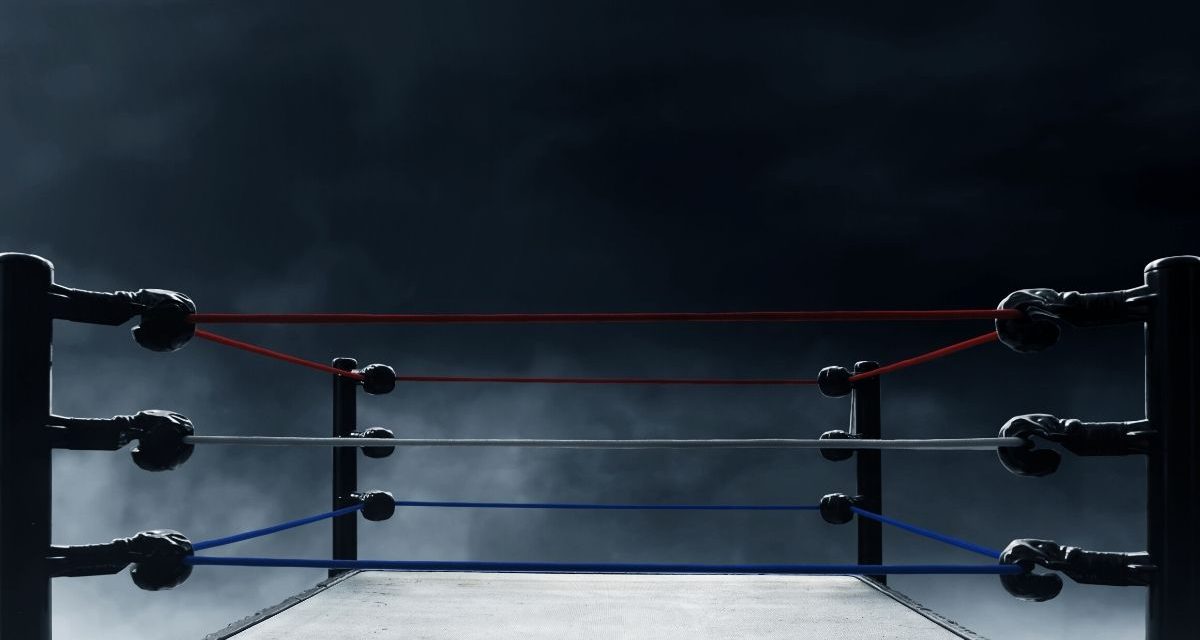It takes quite a while to list all the names and gimmicks that Gene Petit used during his 28-year wrestling career. Ironically, the one he is best remembered for came near the end of his run and lasted little more than a year — Cousin Luke.
Teaming with Hillbilly Jim (Jim Morris) and Uncle Elmer (Stan Frazier) in the WWF of 1984-87, the Hillbillies made a lasting impression with their friendly nature, dancin’ and scufflin’.
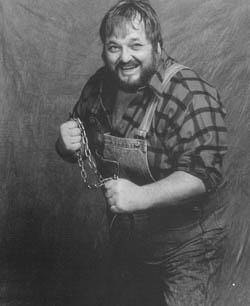
Cousin Luke
“There’s kids that remember, not me specifically, but they still remember the Hillbillies. ‘Oh yeah, you guys were on with the overalls, and did the Doh-See-Doh in the middle of the ring,'” Petit told SLAM! Wrestling. “How could a kid who is 15 years old remember that, unless he saw it later on tapes?”
Getting the role was a matter of being in the right place at the right time for Petit — and having the right photo in his portfolio.
“They were going pretty good and Cousin Junior, I guess he missed a few shots. I just happened to stop by and talk with George Scott, who was the booker, and I had worked for him on two different occasions in Charlotte. George knew my work and he knew me,” recalled Petit.
Petit pitched an idea he had, but Scott said that he’d be “nothing but a doormat” with it; there just wasn’t room on the roster for any other major heels.
“I had a whole bunch of pictures that I showed him and one I had taken just as a joke when I was in Florida; a guy had cutoff jeans, overalls, and a floppy hat, and I put it on and had a picture taken. I showed it to George. He said, ‘You know, right now we’re having problems with Cousin Junior. Can you do the gimmick?’ I said, ‘Sure, I can do it.’ I didn’t know that I could, but you never say no, especially with WWF.”
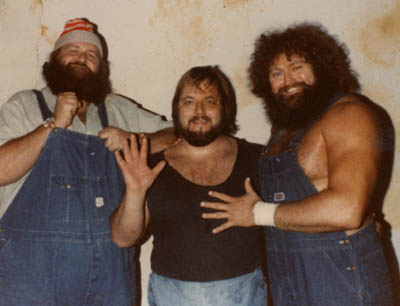
Uncle Elmer, Cousin Luke and Hillbilly Jim. Greg Oliver Collection
The first appearance of Cousin Luke was at TV in Poughkeepsie, NY, where he worked a singles match and a tag team match. He was immediately thrust into the program that had been building between the Hillbillies and Roddy Piper, Bob Orton Jr., and Jesse Ventura.
“Right away I walked into a position that was already fairly good, because they were taking good care of Jim,” explained Petit. “Elmer, they had brought in just to fill in while Jim was hurt with his knee, and Elmer got over really well. He was a big guy, he could move. He couldn’t really do a lot of wrestling, but back then he really didn’t need to. So they needed me to be the mechanic of the team, a guy that could go out and wrestle up and down for 15, 20 minutes. That was the spot that I had. I was glad to be able to take it.”
Cousin Luke used to use a double hammer as a key move, and a big splash off the ropes. “There was no holding back on the splash,” said Petit. “I hit the ropes and I was up in mid-air. When I came down, I came down. They had to position themselves to try to catch it, sit up a little bit and catch me so I wouldn’t crush their ribs. It took qualified guys to be able to get in the ring and know what they were doing.”
Only a few weeks into the gimmick, Petit was wrestling on the West Coast, and there was a bad board in the ring, and he broke his ankle. “I didn’t know it until the next day when we went to L.A., and my ankle was really swollen up. The doctor there said to go to the hospital and get an X-ray.” It turned out that Petit had a broken bone in two places. His foot was placed in a cast, and he went home to New Jersey, where he saw another doctor, who put a fiberglass cast on it, which was a lot lighter.
“They called me for WrestleMania [2] and I still had my cast on. At the time, I guess I should have said yes, but I said no. They used Elmer against Adrian Adonis, and I think he beat Elmer in 45 seconds, because Elmer had missed a couple of main event shots,” recalled Petit.
Age and illness had caught up with Elmer, and he split with the WWF. Petit wouldn’t be far behind. “Vince [McMahon] told me that they would keep me until the end of the year, leave me off for a few months, and then figure out another gimmick, because they were just going to keep Hillbilly.”
In the end, all the confusion with the Hillbillies hurt the gimmick, Petit things. “There was too much back and forth with Hillbilly and he got hurt; they brought Elmer in, and he got fired; Junior left; then I came in, and Hillbilly had a little disagreement with the office, so he took off for a few weeks. We had lost the steam that we had. I finished the year with them, and then started working the independents.”
He was surprised at the reception he got on the indy circuit — and still does on occasion today. “I really never got that much TV coverage, but the hillbilly gimmick was over, and they didn’t know exactly who I was, but they knew the gimmick. I was getting decent money working independents, and at the time, I didn’t think about going back to WWF because I was making more money — realizing more money — than I was with WWF because you worked a full week with them, and you were spending a lot of money on hotels and expenses. The independents, a lot of them I was able to drive to.”
Besides the small shows, Petit also had a couple of trips to Japan, and a tour of Australia. In the U.S., he worked the AWA tapings at the Showboat Casino in Las Vegas, and with Rob Russen’s Sports Channel America promotion.
In a way, his career had come full circle. It was a life going territory to territory again, promotion to promotion.
Born and raised in New Jersey, Petit wasn’t a wrestling fan until he moved to Florida to go to the University of Tampa in the early 1970s. He played on the university football team with Paul Orndorff and Dick Slater, and met his mentor Dale Lewis one summer at the pool of the apartment complex they both lived in. They became friends and one night Dale asked Gene to drive him, Bob Roop and El Lobo (Crazy Luke Graham) to a match in Jacksonville. After that Dale started paying Gene to drive him to matches.
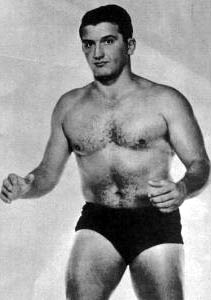
Dale Lewis
One night in North Crossett, Arkansas they were short a couple of wrestlers so Dale told Gene, “You’re wrestling tonight” and gave him an extra pair of tights and boots. Gene didn’t get any instructions on what to do beyond “Don’t worry about it,” which was fairly typical advice for neophytes. He wrestled with Dale and Gypsy Joe Rosario against Silento Rodriguez, Ivan Putski and Alex Perez and got paid $190 for the night’s work. The following Monday Petit was at the YMCA training with Dale Lewis and Tom Jones.
That first match was the only one he ever wrestled as Gene Petit. He took the surname “Lewis” because he and Dale looked so much alike — both had long hair and beards and similar builds – everyone assumed they were brothers and thus he became an “instant” heel. One of Dale Lewis’ specialties was the sleeper hold, and Gene used it one night to put out Grizzly Smith after both Dale and the referee were down. The fans were furious. “That walk back to the dressing room was my first experience of real heat from a crowd,” Petit told Scott Teal of Whatever Happened To …? “Some lady kicked me in the leg with her shoe and I thought my shin was going to explode. Another lady hit me in the back of the head with her purse. It must have been loaded, because the thing was really heavy and solid.”
Petit finished his business degree and went into wrestling full-time. Initially he worked for promoters Bill Watts and Eddie Graham. When Dale Lewis left for a tour of Australia, Gene went up to Mid-Atlantic in Charlotte, where George Scott was booking, for about a year. After taking a few months off in to recover from a broken ankle, Petit did a couple of international tours, for Antonio Inoki in Japan and then to Australia for Frankie Cain. When Petit returned from Australia in 1975 he went back to work for Watts and also in Mobile, Alabama for the Gulf Coast territory, where he won his first belts: Gulf Coast Heavyweight Champion, and Gulf Coast Tag Team champ with Bob Sweetan.

Gene Lewis. Courtesy of the Wrestling Revue Archives
In 1979 Petit went to Oregon for the summer, then to Calgary for a few months with Dale Lewis (the last time they would wrestle together), returning to the Carolinas in 1980 for a couple of years. When George Scott left to work for the WWE in New York, Harley Race invited Petit to the Kansas City territory, which he was co-promoting with Pat O’Connor and Bob Geigel. Petit stayed in Kansas City for a year, then went to Puerto Rico with Roger Smith as one of the Assassins. “[Puerto Ricans] were the craziest fans in the world … they used to throw stuff in the ring. Two-by-fours, nails, pieces of angle iron, nuts and bolts. I actually had a corner of my room where I used to save all that stuff,” he once said.
While in Puerto Rico, Petit met Geto Mongol (Newt Tattrie), who invited him to tour Nigeria with him as one of the Mongols. On returning to the United States, they did a few shows in Atlanta, then Petit went on alone to Fritz von Erich’s World Class Championship Wrestling in Dallas, where The Mongol became part of the Devastation Inc. stable of heels. This was in early 1983, when the territory was experiencing an explosive growth in popularity, which Petit credits to World Class booker Ken Mantell. Lewis got to know Mantell quite well when they drove together to the house shows in Dallas and Fort Worth two days a week. “When Kenny took over World Class they were on Channel 39 in Dallas, which was syndicated TV. They were on in, maybe, 35 markets and within a year, it had gone up to 159 markets. When the [World Class] tapes started hitting areas like Boston and Philadelphia, the people went nuts, because they were used to seeing New York wrestling and that was just punch-kick. The Von Erichs had never been seen by a lot of people outside of Texas – now Boston and Philadelphia and New York and California and Kansas City, all these other markets were starving for them.”
Petit believes that World Class could have been as big as New York or Atlanta later if Mantell had been allowed to take the promotion national. “Kenny had an opportunity to take the World Class show on the road outside the area for three to four shows a week, which would have saved the Von Erichs from overexposure in Texas and would have given the other people in those towns what they wanted to see. Kenny worked very hard at doing this, probably 18-20 hours a day, and had gotten this thing to a point that it was the hottest thing going and could have stayed that way — then Fritz decided not to expand. And that kind of burnt Kenny out.”
At the end of 1983 Petit went back to Florida and ended up rotating several masked characters there: Kharma, Molokai, and the Midnight Rider.
Like with Cousin Luke, he was in the right place at the right time, and was dropped into an already hot program. Given his similar built to Dusty Rhodes — who had been working as the Midnight Rider while he was “banned” from the territory — Petit was put in the outfit and came out during a Kevin Sullivan versus Dusty Rhodes match, where Rhodes had gotten “special permission” for the bout.
Petit loves telling the story. “[Rhodes] had the figure-four on Kevin, Kevin was passed out, and I’m walking out as the Midnight Rider. I was weighing about 280, 290, and I looked, in the outfit, pretty close to what Dusty would look like. The people were a little confused, but they weren’t worried, because the Midnight Rider had been worn by some other guys, like Blackjack Mulligan and a couple of other babyfaces — the people knew that right away. But with me, they were a little confused because I looked so much like Dusty. I got in the ring. I had this long duster jacket on, I had Dusty’s hat, the Midnight Rider mask, and I reached down into my pocket and put this black glove on and held it high so everybody could see it. I go over and I start chopping Dusty on the top of the head. He gets the juice, and then he’s out. The referee had taken a bump, and he was just recovering. In the meantime, I had pulled Kevin Sullivan on top of Dusty, 1-2-3, Kevin Sullivan gets the win. I had to roll him out of the ring. I put him over my shoulder and carried him out of the ring. Well, you could have dropped a pin, because the heat was so red-hot, it was just unbelievable. Then we followed that match all over.”
Petit hurt his back, and the doctor wanted to do surgery the next day; Petit said no so he wouldn’t miss any bookings. “Back then, it was a good spot that I had, and I wasn’t going to lose it. The office said, ‘Don’t worry about it, as long as you can walk to the ring and stay on your feet, we’ll do something about it.’ You do what you do, you take some pain pills and you go out and do your match, and that’s what I did until my back got better.”
In the end, Petit ended up having to leave Florida, and went home to Jackson, Mississippi for seven months to recuperate. One day while visiting his parents in New Jersey he had that fateful visit to George Scott, and the rest, as they say, is history.
The last eight years for Petit, however, have not been pleasant.
He had been busy on the independent scene, and ran some shows himself. But then in 2000, his back gave out on him. He went to the hospital after a show in New York, and was sent back home; two weeks later he couldn’t move and hadn’t gone to the bathroom all day. His mother was a retired registered nurse who convinced him to avoid a burst bladder and go to the hospital again in an ambulance; they did surgery the next morning, and Petit spent three weeks in a rehab facility, and then as an out-patient.
“Then I was okay for about a year, then I got rear-ended in a car accident. About two weeks later, I was right back where I was when I had the first surgery,” recounted Petit.
Petit had surgery scheduled with a new doctor at the Cabrini Medical Center in New York City on September 12, 2001. Needless to say, the hospital on the day after the bombing of the World Trade Center was not doing non-emergency surgery. With the surgery eventually scheduled, the hospital started asking for cash, since the insurance wasn’t going to cover the entire procedure.
“I put the surgery off, and a week later, same thing; I couldn’t urinate. I went to a hospital in Morristown, which was close to where my parents were living, where I stayed. Again, I went in one day and they operated the next. It was pretty much an emergency-type surgery. It was a lower back problem,” Petit said.
Then it got worse. Petit got a staph infection from that surgery, “which is a pretty serious staph infection that had gone right to the spinal area in the lower back.” Doctors had to split his back open, going through the same openings to clean out the infection. He spent seven weeks in isolation on a real strong antibiotic. “The doctor said, ‘If this doesn’t work, you’re out of luck, because we don’t know what else to do.'”
Rehab proved to be extremely tough, and one doctor was certain that Petit had MS on top of all his other problems. A spinal tap and an MRI of the brain didn’t reveal the disease, but to this day, Petit has not regained full movement and is limited to a wheelchair or sometimes to a walker.
He has spent the last five years in an assisted living facility in Morristown, NJ. “I’ve been here five years trying to get my back straightened out. I’ve had my neck operated on, I’ve had two more procedures done on my back,” he explained. Just about the only option left is a complete back reconstruction.
It is no surprise that Petit laments the lack of a health plan in wrestling. “You could ask me right now if I was healthy would I go back to wrestling, and I would say yes. But I would definitely find somebody that would take money from us before we saw our cheques and put it away, either in a 401(k), or some sort of profit-sharing plan so that when we retired we had something. I spent 28 years in this business.”
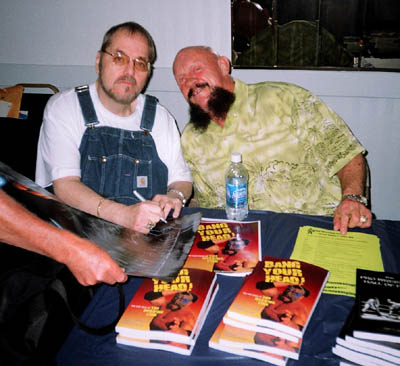
Gene Petit and Dewey Robertson at the Pro Wrestling Hall of Fame induction weekend in 2006. Photo by Greg Oliver
Petit still goes to the occasional show to sign autographs, and requests that he is in the advertising: Special Appearance by Hillbilly Cousin Luke. His other passion is the Pro Wrestling Hall of Fame in Amsterdam, NY, where he sits on the board of directors.
Tony Vellano, president of the PWHF’s board of directors, credits Petit with being a driving force behind the growth of the Hall of Fame. “Gene’s been a great guy and a great supporter right from day one. In fact, when we started this idea of having a hall of fame, mainly it was myself and George Steele talking about it. But I think it was only a day or two later I was doing a wrestling show and on the show was Cousin Luke. I mentioned it to [Gene] and he badgered me to make sure that I would keep him informed. Well, we did and he has worked tirelessly from day one until now.”
Going to the shows is about more than getting out of the home. “I like being around the guys. That’s why I like the Hall of Fame. Tony has done such a great job, and done a job that no wrestler would have been able to do.”
He recognizes that, as much as he might want one, getting a ring as an inductee in the Hall of Fame is unlikely. Petit was a mid-card guy by and large, and that is nothing to be ashamed of; in fact, there are no Hall of Famers without men and women like Petit.
“I can’t tell you I was a main eventer. I was nowhere on the level of a Ric Flair, a Harley Race, or either one of the Funks or Nick Bockwinkel, but I was certainly a good mid-card wrestler. I fit the spot. You got wins over the opening match guys, and maybe go a Broadway with some of the top guys, and come back again and put the guy over, because I was strong enough that people believed the match,” he said. “I worked just about every NWA territory there was, and either won a TV trophy or had a tag strap or a singles strap — got it from one guy, and dropped it to another. But still, I had a belt in just about every territory that I went to. I’m proud of my career. I’m not happy with the way wrestling is today, but it’s nobody’s fault, it’s just the way that it is.”
— with files from Meredith Renwick
EDITOR’S NOTE: Portions of this interview originally appeared in Wrestling Revue, issue #147, in an article by Meredith Renwick.
ADDENDUM: Gene Petit passed away on September 29, 2013.
RELATED LINKS
